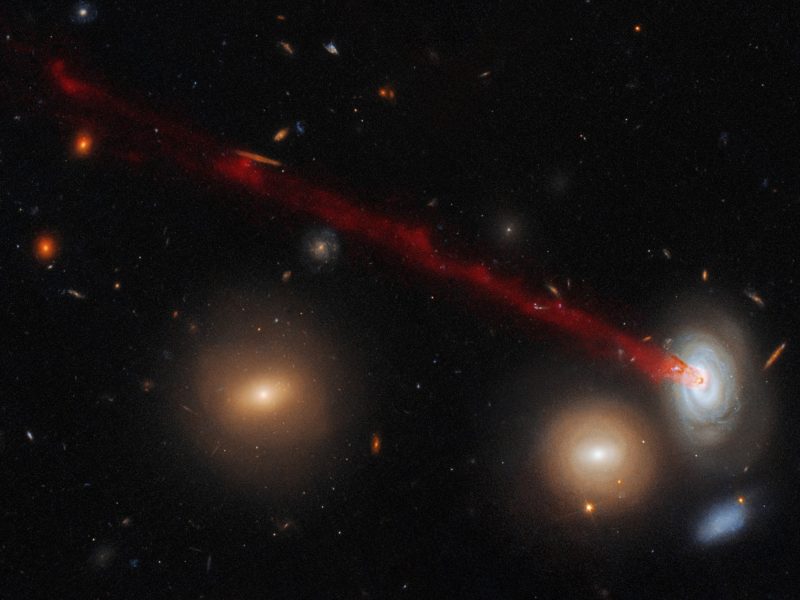
Help EarthSky keep going! Please donate what you can to our annual crowd-funding campaign.
This image, created by combined data from the Hubble Space Telescope and the Subaru Telescope in Hawaii, shows just a part of the tail emerging from a spiral galaxy nicknamed D100.
Galaxy D100 is a member of the huge Coma Cluster. One of the most populated galaxy clusters known, the Coma Cluster is thought to contain as many as 10,000 galaxies and to stretch 20 million light-years from side to side.
D100 got its spectacular tail of gas – which stretches far beyond the left side of this image – when pressure from the cluster’s hot constituent plasma (known as the intracluster medium) stripped gas from D100 and tore it away from the galaxy’s main body, drawing it out into the plume you can see in the image above.
Here’s more from the ESA explaining the phenomenon:
Tails such as these are created by a process known as ram-pressure stripping. Despite appearances, the space between galaxies in a cluster is far from empty; it is actually filled with superheated gas and plasma, which drags and pulls at galaxies as they move through it, a little like the resistance one experiences when wading through deep water. This can be strong enough to tear galaxies apart, and often results in objects with peculiar, bizarre shapes and features — as seen here.
Bottom line: Image of a spiral galaxy with a tail.











